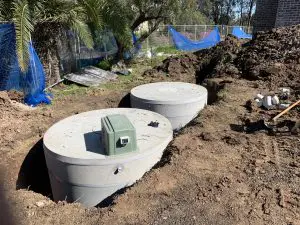Understanding the Role of Carbon in the Treatment Process
Introduction
Wastewater treatment plays a vital role in maintaining environmental sustainability and protecting public health. One crucial aspect of the treatment process is the involvement of the carbon cycle. The carbon cycle is a natural process that describes the flow of carbon in various forms between the atmosphere, land, oceans, and living organisms. In this article, we will explore how the carbon cycle is intricately connected to wastewater treatment and its significance in ensuring effective and sustainable treatment processes.
The Carbon Cycle and Organic Matter in Wastewater
Wastewater contains various organic compounds such as human waste, food scraps, and other biodegradable materials. These organic substances are rich in carbon, and their presence in wastewater makes it an excellent resource for harnessing carbon in the treatment process.
During the primary treatment stage of wastewater treatment, large solids and debris are removed, and the remaining wastewater enters the secondary treatment phase. Here, microorganisms play a crucial role in breaking down the organic matter. Carbon, in the form of organic compounds, serves as a food source for these microorganisms, fueling their growth and activity.
As microorganisms consume organic matter, they convert it into simpler compounds and release carbon dioxide (CO2) as a byproduct. This release of CO2 occurs as part of the natural respiration process of microorganisms. Thus, the carbon from organic matter in wastewater is effectively transferred back to the atmosphere, completing one cycle of the carbon flow.
Carbon Sequestration in Wastewater Treatment
While a significant portion of the carbon in wastewater is released back into the atmosphere, some of it can be captured and utilised for additional purposes. This process of capturing and storing carbon is known as carbon sequestration.
In wastewater treatment, carbon sequestration can be achieved through the use of advanced treatment techniques such as anaerobic digestion and biological nutrient removal. Anaerobic digestion involves the breakdown of organic matter by bacteria in an oxygen-free environment. During this process, methane gas (CH4) is produced as a byproduct, which can be captured and utilised as a renewable energy source.
Biological nutrient removal is another method that can enhance carbon sequestration. By providing controlled conditions and promoting the growth of specific bacteria, it is possible to remove excess nutrients such as nitrogen and phosphorus from wastewater. This process not only improves the water quality but also facilitates the storage of carbon in the form of microbial biomass.
The Role of Carbon in Biological Processes
Carbon serves as a fundamental building block for all living organisms. In wastewater treatment, microorganisms utilise carbon as an energy source for their growth and metabolic processes. As microorganisms consume organic matter, they convert it into biomass, which can be further utilised for various purposes.
One such application is the production of activated sludge, which is a key component of the secondary treatment process. Activated sludge consists of a mixture of microorganisms, organic matter, and water. The microorganisms present in activated sludge
continuation:
continuously consume carbon from the organic matter in wastewater, helping to remove pollutants and purify the water. The activated sludge process promotes the growth of beneficial bacteria and microorganisms, which efficiently break down organic compounds and remove harmful substances from the wastewater.
Moreover, carbon also plays a crucial role in denitrification and biological phosphorus removal processes. Denitrification involves the conversion of nitrates (NO3-) into nitrogen gas (N2) through the action of denitrifying bacteria. These bacteria require a carbon source to carry out the denitrification process effectively. By providing a carbon-rich environment, wastewater treatment facilities can facilitate denitrification and reduce the concentration of nitrogen compounds in the effluent.
Similarly, biological phosphorus removal relies on the presence of carbon for the growth of specific bacteria that can absorb and store phosphorus. By controlling the carbon-to-phosphorus ratio in the treatment process, wastewater facilities can promote the removal of phosphorus and prevent its release into the environment.
The Carbon Footprint of Wastewater Treatment
While the carbon cycle is involved in various aspects of wastewater treatment, it is important to consider the carbon footprint associated with the treatment processes. The carbon footprint refers to the total amount of greenhouse gas emissions, particularly carbon dioxide, generated during the treatment operations.
Wastewater treatment facilities consume energy for various purposes, including pumping, aeration, and the operation of treatment equipment. The energy sources used, such as fossil fuels or renewable energy, significantly impact the carbon footprint of the treatment process. By adopting energy-efficient technologies and utilising renewable energy sources, wastewater treatment plants can reduce their carbon emissions and contribute to a more sustainable approach.
Furthermore, the proper management of sludge, a byproduct of the treatment process, is essential for minimising the carbon footprint. Sludge can be treated through anaerobic digestion, as mentioned earlier, to produce methane for energy generation. Additionally, the remaining sludge can be further processed to produce fertiliser or be utilised for land application, contributing to soil carbon sequestration.
Conclusion
The carbon cycle plays a vital role in wastewater treatment, from the breakdown of organic matter by microorganisms to the capture and utilisation of carbon for energy production and nutrient removal. Understanding the involvement of the carbon cycle in wastewater treatment helps us recognise the interconnectedness of natural processes and human activities.
By harnessing the carbon cycle effectively, wastewater treatment facilities can not only remove pollutants and ensure the protection of water resources but also contribute to the reduction of greenhouse gas emissions and the generation of renewable energy. Embracing sustainable practices, such as energy efficiency and carbon sequestration, enables us to optimise the treatment process while minimising its environmental impact.
As we continue to prioritise environmental sustainability and strive for cleaner and more efficient wastewater treatment, the carbon cycle will remain a crucial aspect of our efforts. By working in harmony with nature’s processes, we can achieve a more sustainable future for both our communities and the planet as a whole.
Eco-Septic is a Sydney based manufacturer and specialises in commercial wastewater systems of various shapes and designs. We can provide fast and free quotes relevant to your commercial wastewater needs, all while keeping in mind individual spending capabilities.
Contact us today for a fast quote at 1800 808 135 or visit us at www.ecoseptic.com.au.
We cover all Sydney suburbs as well as the regions of South Coast, Snowy Mountains, Southern Highlands, Riverina, Blue Mountains and Hawkesbury, Laguna, North and Mid North Coast, Bateman’s Bay, Nowra, Mallacoota, Narooma, Balmora, Cobargo, Glenn Ines, Avondale, Glenmore, Mogo, Tarago, Torrumbarry, Albury, Faulconbridge, Maraylya, Sherbrooke, Strathdickie, Little Hartley, Linden, cattail, Bowen Mountain, Murwillumbah, Kyogle, Bryon Bay, Lismore, Evan Heads, Yamba, Grafton and the surrounding areas.
Related Posts
- What Size Septic Tank Do I Need For My Home?
- Septic Tank Maintenance Guide
- Revolutionizing Waste: AWTS Systems Pave the Way for Sustainable Living in Australian Homes
- How Often Do Septic Tanks Need To Be Replaced?
- Maxi Series Range
- What are the New Technologies for Wastewater Treatment
- What are the advantages of wastewater treatment systems?
- What Are The Advantages Of Rainwater Tanks?




